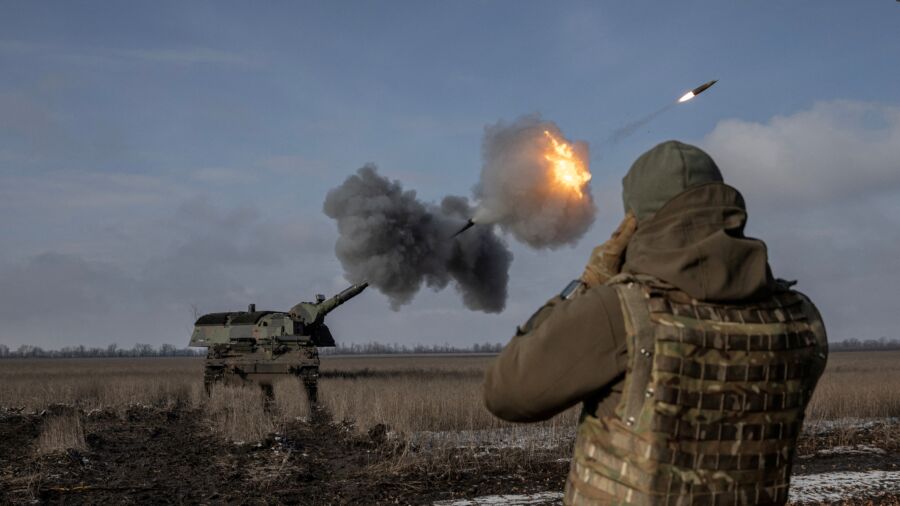Ukrainian forces used U.S.-provided long-range ballistic missiles, known as the MGM-140 Army Tactical Missile System (ATACMS), for the first time on Tuesday, striking Russian forces in eastern Ukraine.
Ukrainian President Volodymyr Zelenskyy directly thanked the United States for supplying the ATACMS missiles in an address on Tuesday evening.
“Today I am especially grateful to the United States. Our agreements with [President Joe Biden] are being implemented, and they are being implemented very accurately. The ATACMS have proven themselves,” Mr. Zelenskyy said.
Russian state media has reported one suspected ATACMS struck the town of Skadovsk, injuring two, while a second suspected ATACMS strike hit Berdyansk. The attacks and the types of weapons employed could not be independently confirmed
Skadovsk is located in the Kherson region and Berdyansk is located in the Zaporizhzhia region, both of which are Ukrainian territories that Russia asserted control over after staging an annexation referendum last year.
Berdyansk is situated along the Sea of Azov, dozens of miles from the frontline. Nevertheless, the Ukrainian military reported carrying out a strike across this Russian-controlled territory on Tuesday, and it claimed its forces destroyed multiple helicopters, an air defense missile launcher, various other specialized vehicles, and ammunition depots in Berdyansk. The Ukrainian military did not specify what methods it used to conduct the long-range strike.
Secretive Weapons Transfer
Mr. Zelenskyy’s comments during the Tuesday night address come as the first official indication that the United States has supplied the long-range ATACMS ballistic missiles to Ukrainian forces.
Ukrainian forces have been asking for the ATACMS for months, but the Biden administration has avoided publicly supporting such weapons transfers. The ATACMS issue came up again when Mr. Zelenskyy arrived for a visit to the United States on Sept. 21.
Asked about the weapons during a Sept. 21 White House press briefing, national security adviser Jake Sullivan said President Biden had considered the request but “determined that he would not provide ATACMS.” Despite Mr. Sullivan’s public denial, NBC reported the following day, citing unnamed U.S. officials, that President Biden had agreed to begin supplying the missile system to Ukraine.
U.S. military officials continued to avoid specifically confirming the alleged ATACMS transfers in subsequent press events. Pentagon press secretary Brig. Gen. Pat Ryder avoided such an announcement about the alleged ATACMS transfers as recently as Oct. 5.
The Biden administration has approved transfers of a variety of different weapons systems to Ukraine—such as artillery, tanks, drones, and fighter jets—but in those cases, the announcements for the weapons system transfers have preceded their arrival and use on the battlefield. In this case, the Biden administration only acknowledged the transfer after Ukrainian forces had already employed them against Russian targets.
“The United States recently provided Ukraine with a type of ATACMS capable of ranging out to 165 km as part of our ongoing support for the people of Ukraine as they defend their territory against Russia’s brutal invasion,” White House National Security Council spokesperson Adrienne Watson told CNN on Tuesday. “We believe this will provide a significant boost to Ukraine’s battlefield capabilities without risking our military readiness.”
One possible reason the Biden administration has not transferred ATACMS to Ukraine earlier is a concern about escalating the Russia–Ukraine war into a wider conflict.
Some variants of the ATACMS are capable of firing in excess of 300 km (about 190 miles), raising the possibility of Ukrainian operators firing the missiles deep inside Russia. By equipping Ukraine with shorter-range variants that can only fire 165 km (about 100 miles), the Biden administration may hope to supply Ukraine with a powerful precision weapon while alleviating some concerns about escalating the conflict.

